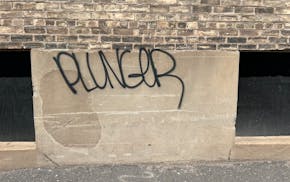Fewer people are becoming homeless after their release from Minnesota prisons, thanks to focused state efforts to reduce recidivism by helping stabilize former inmates' lives post-incarceration.
The decrease — 19% of the 4,586 people became homeless after leaving prison in 2022 — was highlighted in the Department of Correction's annual homelessness report. It's a nearly 6 percentage-point drop from 2021, when close to 25% of people became homeless after prison.
DOC Commissioner Paul Schnell said that while his goal is to have no inmates released into homelessness, he was pleased about the positive trend.
"That's important when it comes to thinking about public safety, especially when we know housing factors play a big role in a person's ability to re-enter the community," Schnell said.
Schnell cited a few factors for the decrease, including the state's increased capacity to connect higher-risk homeless people with public assistance benefits before release, thanks to a renewed agreement with the Department of Human Services. The results also follow completion of the DOC's new homelessness mitigation plan and legislative funding of $4.3 million in the 2024-25 fiscal year and $3.4 million for 2026-27 to assist with reducing post-prison homelessness.
Nearly 1 in 5 inmates becoming homeless upon release is still too high, Schnell said, particularly when the housing rate is so key to reducing recidivism.
"When housing instability affects such significant portions of their life, it becomes almost insurmountable for people to be successful, because they have to manage so much," he said. "Just being ready to go to work or get that job, it becomes impossible without housing."
Sarrell Jack has benefited from the state's housing efforts for incarcerated people. Jack spent time living on the streets in northern Minnesota before she was arrested in March. She spent four months in jail for DWI before her release in June as part of a drug court program.
Upon release, Jack was connected with temporary housing through Four Winds Lodge, a substance use treatment program, and then the Healing House, which houses Native American women in Bemidji.
The Healing House assisted Jack with transportation to her job in Cass Lake when she didn't have a car. It also provided space for visitation time with her children and connected her with job opportunities.
"They were a big part of my journey," she said.
Thanks to the assistance, Jack, 32, said she has experienced a turnaround. She now rents a home, has a job at a treatment facility, has a car and a license, and regained custody of her four children.
"I can feel a big difference in knowing myself, and my kids see a big difference that we're all happy, and I'm making better choices for us," she said.
Jack said more housing options are needed, especially for women, and hopes the Healing House can expand. It currently admits three women at a time.
"I know there are a lot of women in that process of trying to get their kids back, and I don't know of many programs that help you with that," she said.
The report also looks at racial disparities and post-release homelessness. Close to half of all those released into homelessness were people of color, consisting largely of Black and Indigenous people, it shows.
Schnell said he hopes to reduce those higher homelessness rates among people of color in particular.
"We have to make investments and be targeted to make sure those people have the same opportunities to turn their lives around," he said.

Review: 'Flex' brings hoops and dreams to life at Penumbra Theatre

Duluth 'plunger' vandal charged with defacing multiple sites in months-long spree
Anderson: For opener, fishing will be fantastic — and catching will be great

As unsolved Minneapolis homicides stack up, families of victims wait for justice

